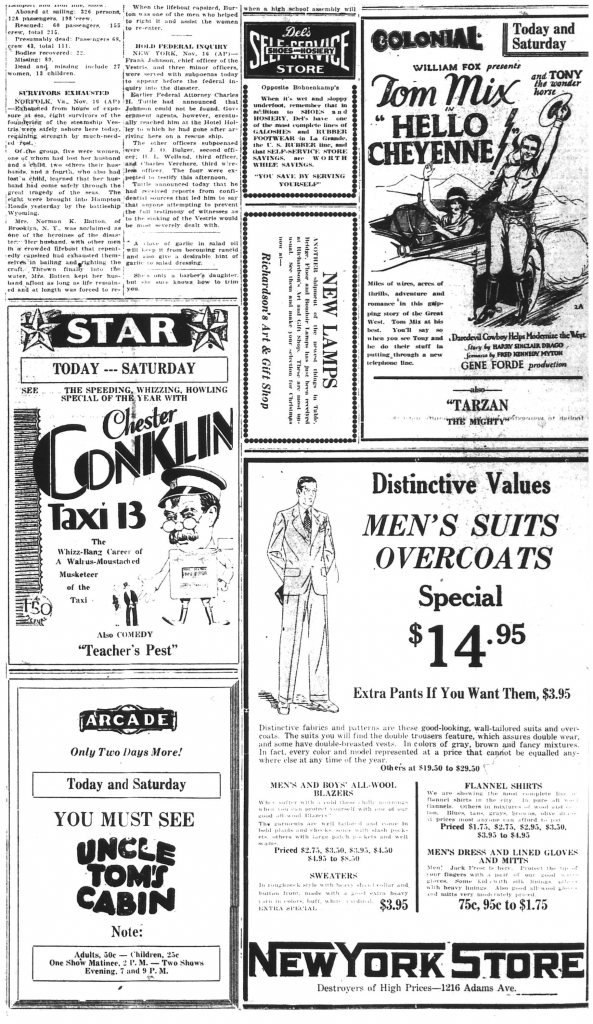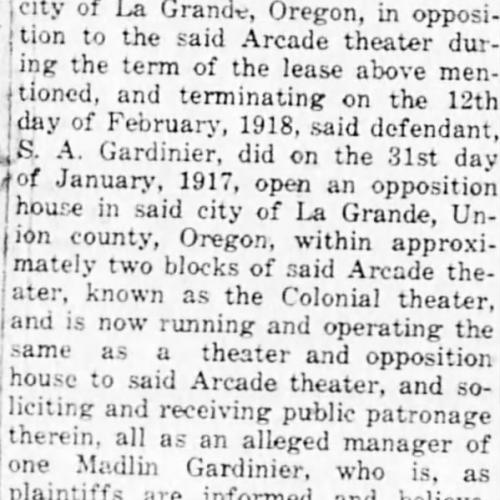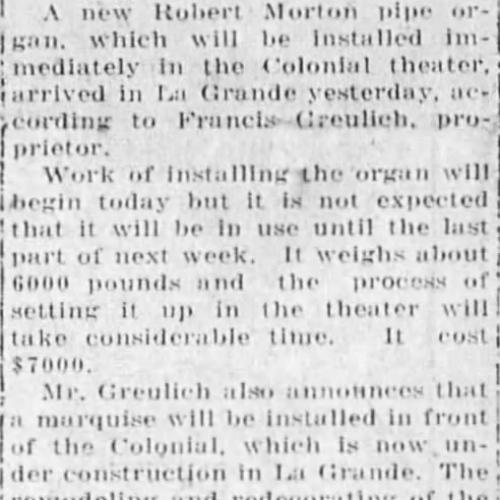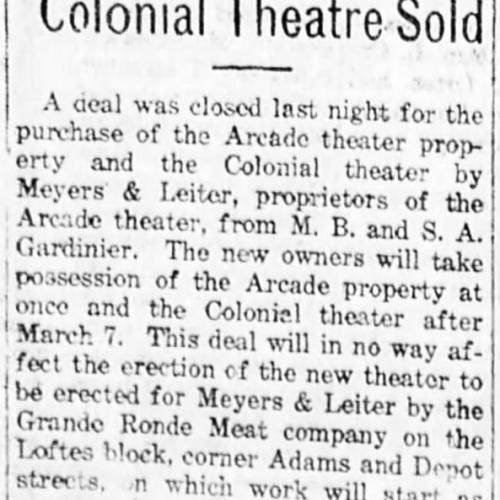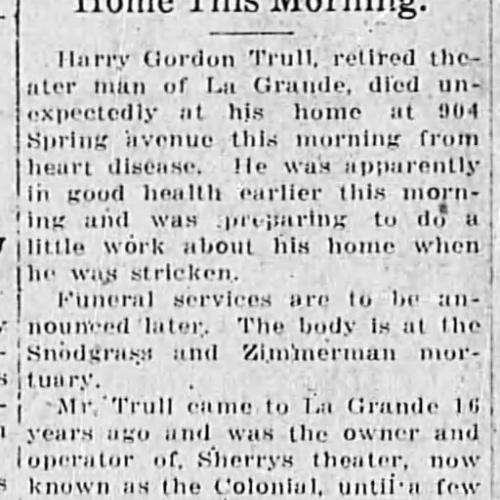Original owners of the Colonial, S.A. Gardiner and his wife, Madlin, sold the business to J.D. Meyers and Mrs. H.B. Leiter in April 1917.
The owners of La Grande’s other major theaters, the Arcade and the Star, took significant steps to restrict the successful operation of any competitors. Meyers and Leiter had formed The People’s Amusement Company, which is perhaps one of the earliest examples of a media conglomerate. The company coordinated the motion pictures that were screened at its various theaters in order to limit competition within its own properties, while still competing with theaters owned by other individuals. In February of 1917, they took legal action against the Colonial theater, which at that point had been managed by S.A. Gardinier and his wife. The suit claimed that they had entered into an agreement with Meyers and Leiter to refrain from operating the theater until February 1918.
There is little information published about the specifics of this lawsuit, but it appears to have been resolved just a few months later–with Meyers and Leiter securing full control of the Colonial.
For much of the 1920s, the three major theaters operating within La Grande were the Arcade, the Star, and the Colonial. All three were under the control of The People’s Amusement Company.
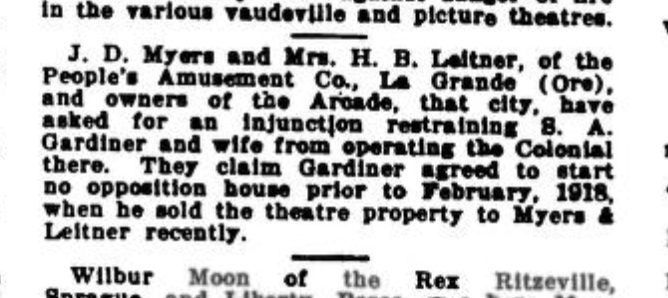

During the 1920s, nearly every issue of the La Grande Evening Observer contained a large advertisement for current screenings at the Colonial. These ads typically appeared alongside promotional information for the Arcade and the Star theaters as well. The common management of the three theaters enabled coordination among the programming and promotion, so that the three theaters did not necessarily directly compete with one another.
